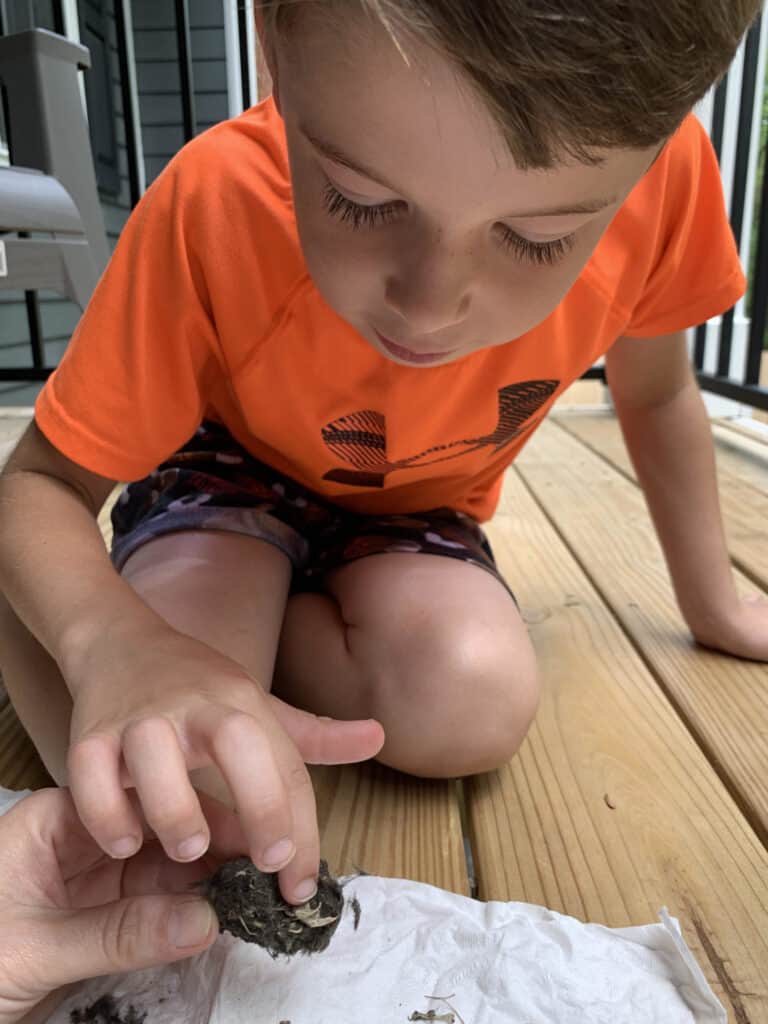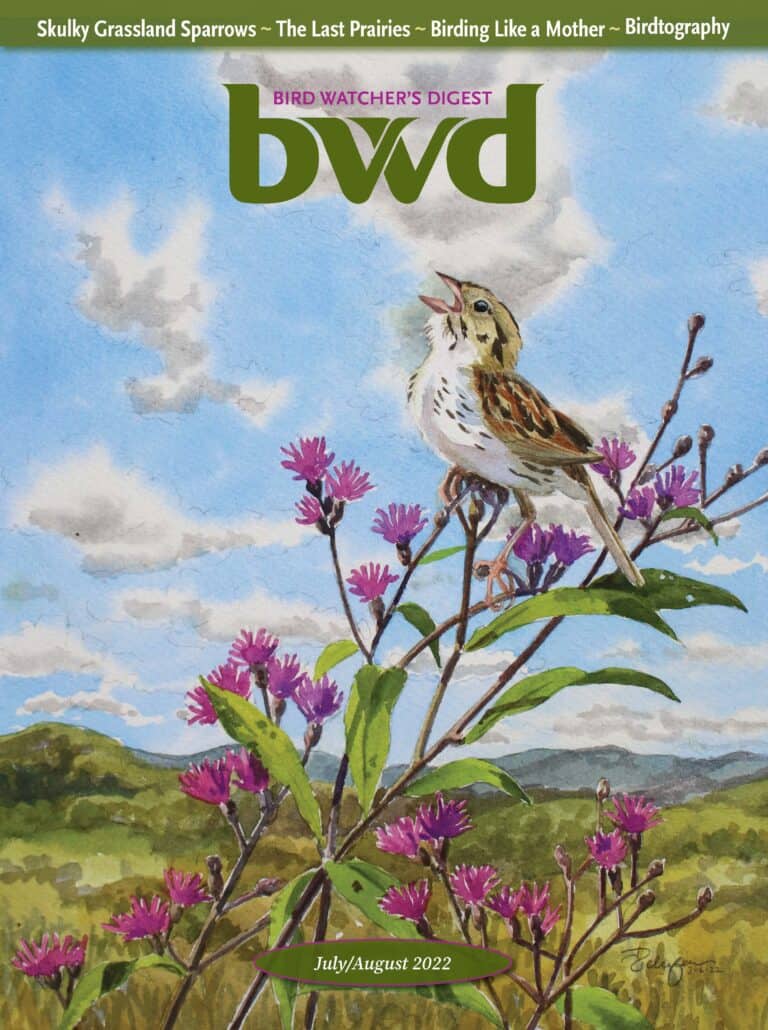
Last winter during our annual Christmas Bird Count in southeastern Ohio, my team of birders visited an old barn known to have roosting barn owls, hoping to add them to our species list. While we did not lay eyes on the owl (darn it, would’ve been a lifer for me!), one of the leaders located an owl pellet. Knowing that I have young children, he kindly gave it to me to take home and dissect it with them.

I’ve been saving that pellet all this while, waiting for the “right” time to sit down with it and give it our full attention. Last week, as the nightmare that has been online schooling mercifully drew to a close for our family, I decided that pellet was going to be a reward for my son and me to celebrate a not-so-pretty chapter in our lives. (Normally a kid who enjoys school and breezes through homework, he turned into a belligerent so-and-so once our house became the classroom.)
I’m going to go ahead and guess that most people don’t consider dissecting an owl pellet a reward, but it is for this bird nerd, and my son is showing promise of inheriting his momma’s bird nerdom. (For example, if I say I saw a goldfinch, he’ll say, “Mommy, you mean an AMERICAN goldfinch.” <and my heart swells with pride>)
So, as we stared down the last few worksheets to be completed, I made a proposition: “Buddy, if you get through these last few lessons, I’ve got something really cool for us to do.” And I pulled out the pellet and explained what it was and what was inside, and his eyes got REAL big and he magically whipped through the rest of his work. HALLELUJAH.

We immediately spread out on the porch with some tweezers and the pellet and got to work. We talked about what a pellet is exactly, which is the fur, teeth, and bones of the owl’s prey—all the parts the owl can’t digest. Owls swallow their prey whole, and these indigestible parts are densely compacted and then regurgitated. We also googled “owl regurgitation” and found this awesome brief video of a barn owl coughing up a pellet!
It was delicate work, as these things are packed unbelievably tight, and we carefully pulled out tufts of fur to reveal bones of all shapes and sizes. It took a little while to start understanding what we were seeing exactly, but it started coming together as we realized the numerous long skinny bones were ribs, and the tiny hollow ring-like ones were vertebrae. And it got especially exciting once we uncovered a skull with rows of teeth intact. We pulled out a few of those, in fact—this barn owl had eaten well that day!
But what exactly had it eaten? It was the shape of the lower jawbone with its long, curved, yellowed incisors that was our clue that the owl had been feasting on voles. A little bit of googling, and we felt pretty confident about our vole identification. (Which led to a whole side conversation about what is a vole versus a mole or a shrew… It is no joke when they say that birding is the gateway drug to getting sucked into all realms of nature!)

As you can imagine, this quality time with my son was rewarding on many levels—and you better believe I was internally celebrating that his “reward” for finally finishing school was secretly educational! He has already asked if we can do it again, and if we can get enough pellets for his sisters, too.
Owls are generally consistent in where they roost and in producing pellets daily, so finding pellets on your own is actually not too difficult if you know where to look, but it turns out there are a boatload of sites you can order them from, and for only a couple bucks apiece. My friend Lisa, who is an awesome homeschooling mama, has ordered them from this site, and she shared that Etsy interestingly has a large number of owl pellet vendors, too.
Needless to say, I highly recommend getting your hands on some owl pellets, whether you have kids or not—this activity is rewarding for bird nerds of all ages!

Looking to Subscribe?
Get 6 print issues of the magazine delivered to your door & free digital access
One Year Print Subscription: $26
(to US or Canada, includes digital access)
One Year Digital-only Subscription: $15




